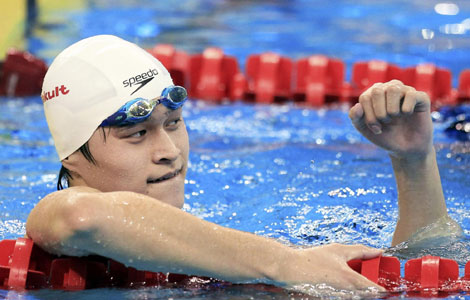China's space module to be launched as planned
Updated: 2011-08-19 15:09
(Xinhua)
|
|||||||||||
BEIJING - The launch of a Chinese unmanned space module, the Tiangong-1, will not be affected by the failed launch of an experimental orbiter on Thursday, an expert said Friday.
Qi Faren, a chief designer of China's "Shenzhou" spacecraft family, said that the carrier rocket for the Tiangong-1 is different from that used for the experimental orbiter SJ-11-04, which failed to enter Earth's orbit due to a malfunction of the rocket.
The Long-March II-F, the carrier rocket that will launch the Tiangong-1 into orbit, is China's most well-known and reliable carrier rocket. Developed in 1992, the rocket has successfully propelled seven Chinese spacecraft into orbit.
The rocket is expected to send the 8.5-metric ton Tiangong-1, or "Heavenly Palace 1," into space in the second half of this year to perform the nation's first space docking procedure.
The Tiangong-1 will dock with the unmanned Shenzhou-8 spacecraft, which will be sent into space two months after the Tiangong-1's launch.
Both the Long March II-F carrier rocket and the Tiangong-1 have been moved to the Jiuquan Satellite Launch Center in Northwest China's Gansu province and are now in "normal condition," Qi said.
The experimental orbiter SJ-11-04 failed to go into orbit after its Long March II-C carrier rocket malfunctioned. The rocket was launched from the Jiuquan Satellite Launch Center at 5:28 pm Thursday.
The cause of the malfunction is being investigated.
Hot Topics
Anti-Gay, Giant Panda, Subway, High Speed Train, Coal Mine, High Temperature, Rainstorm, Sino-US, Oil Spill, Zhu Min
Editor's Picks

|

|

|

|

|

|







